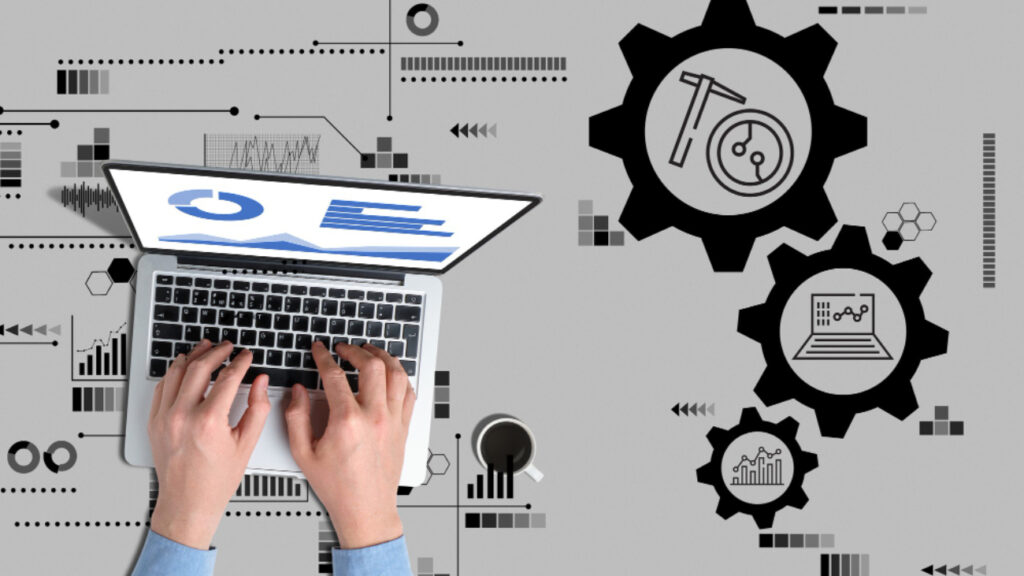E-waste, which includes everything from outdated laptops to abandoned smartphones, has grown to be a serious environmental issue exclaimed Bahaa Al Zubaidi. Devices are frequently updated quickly as technology advances, producing heaps of waste that contribute to pollution, resource depletion, and an increase in toxic waste in landfills. Fortunately, a long-term solution to this expanding issue is provided by the adoption of circular IT models.
A circular IT model: what is it?
By recycling, reusing, and renovating, a circular IT model aims to reduce waste and optimize resource utilization. The circular model seeks to prolong the lifecycle of IT goods and lessen the environmental impact of e-waste, in contrast to the conventional linear “take-make-dispose” approach, where things are utilized and then discarded. This strategy incorporates a number of important behaviours, including creating durable products, supporting product refurbishing, boosting recycling efforts, and encouraging the reuse of parts.
Crucial Procedures for Circular IT Models
Longevity and Upgradeability in Product Design
Designing products that are easy to upgrade and have a longer lifespan is one of the core elements of a circular IT model. In order to enable consumers to upgrade or replace parts without having to throw away the entire gadget, manufacturers are now concentrating on developing devices with modular components. Companies like Fairphone, for example, create smartphones with interchangeable parts so that consumers may change the screens, cameras, and batteries, minimizing the requirement for a full device repair.
Device Refurbishment and Reuse
Businesses and households can repair and repurpose outdated or malfunctioning IT equipment rather than discarding it. In order to prolong their lives and lessen the demand for new products, refurbishment entails fixing and improving used electronics. Businesses like Dell have welcomed this trend by providing trade-in programs that allow consumers to exchange their used equipment for discounted or refurbished gadgets. After that, these reconditioned gadgets are marketed with little harm to the environment.
Handling E-Waste Properly
Another essential component of the circular IT strategy is recycling. It is possible to recover and reuse valuable materials, including metals, polymers, and rare earth elements, instead of disposing of outdated devices in landfills. Numerous digital behemoths, including Apple, have pledged to follow ethical recycling guidelines. For example, Apple’s Daisy robot disassembles obsolete iPhones, recycling and sorting circuit boards, glass, and metal parts. This lessens the environmental impact of producing new devices while also recovering vital resources.
Programs for IT Asset Management and Disposal
One important component of lowering e-waste is the appropriate management of IT assets, which includes the safe disposal of obsolete equipment. IT asset management (ITAM) programs are used by many businesses to monitor and control the hardware lifetime, guaranteeing appropriate recycling and reuse when the devices approach the end of their useful lives. Additionally, businesses like HP have set up recycling and take-back initiatives to encourage customers to return outdated electronics for appropriate disposal.
Advantages of IT Circular Models
Reduction of Environmental Impact
Businesses and consumers can greatly minimize e-waste by adopting circular models. Reusing and recycling IT equipment helps keep the environment free of dangerous elements like cadmium, lead, and mercury. For example, HP has prevented hazardous materials from ending up in landfills by recycling millions of pounds of technological waste.
Preservation of Resources
The circular IT approach contributes to resource conservation. Businesses can recycle and reuse existing components rather than depending on mining for new metals and raw materials. This lessens the negative effects of resource extraction on the environment, which frequently damages ecosystems and uses a lot of energy. For instance, recycling these materials lessens the requirement for mining activities that use a lot of resources to acquire rare earth metals for devices.
A Better Image for the Brand
Businesses can improve their reputation with customers by implementing circular IT practices. Customers are drawn to brands that emphasize sustainability as environmental issues gain more attention. A corporation can stand out from rivals and attract environmentally sensitive customers by committing to cutting down on e-waste and putting circular processes into place.
Conclusion
One of the most important steps in building a more sustainable future is reducing e-waste via circular IT models. Businesses and customers may lessen the environmental impact of discarded electronics by creating goods that last longer, encouraging refurbishment, and stepping up recycling initiatives. In addition to cutting waste, the move to circular IT saves precious resources and fosters a more environmentally friendly economy.
Adopting these techniques benefits organizations looking to cut expenses and enhance their sustainability credentials in addition to the environment. The article was written by Bahaa Al Zubaidi and is published by the editorial board of Tech Domain News. For more information, please visit www.techdomainnews.com.






